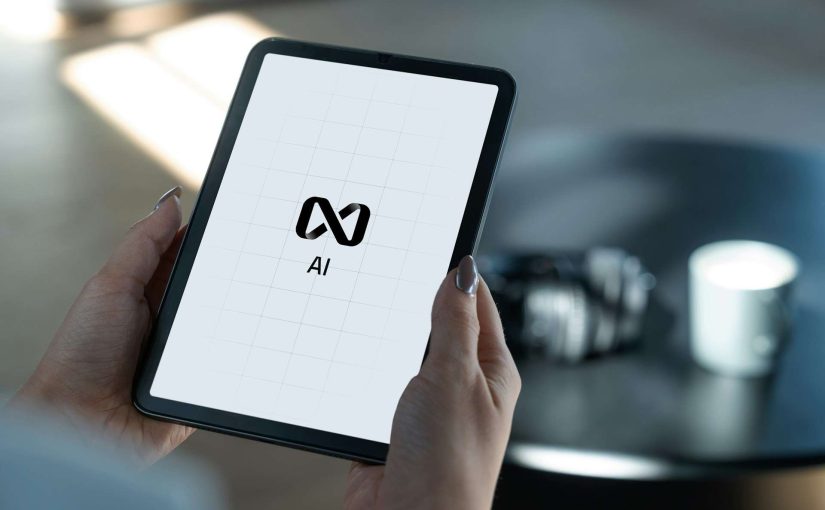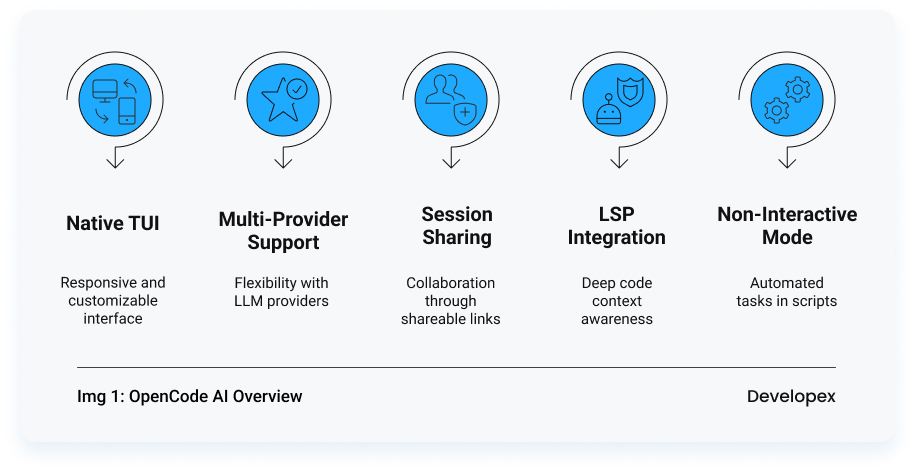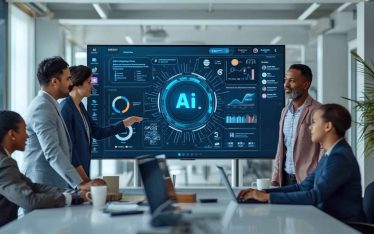
The integration of artificial intelligence into software development is one of the most significant events in the industry over the past decade. From simple algorithms offering syntax suggestions to autonomous systems capable of creating entire applications, the evolution of technology is happening at an unprecedented rate. To understand the variety of available tools, it is necessary to clearly define the terms that describe their functional roles.
- AI Code Assistant: This is a system that provides reactive suggestions, such as code completion, based on the current context. Its main goal is to increase the developer’s typing speed and minimize syntax errors. The assistant remains passive until the user starts typing.
- Agentic AI: This is a more complex system capable of understanding a high-level goal, planning a sequence of actions, and autonomously executing those steps using various tools (e.g., terminal commands, web browsers, IDE functions). An agent can act proactively, making decisions independently to achieve the set task.
- Generative AI: This is the basic type of AI model that can create new content (code, text, images) based on patterns learned from vast training datasets. All the tools discussed in this report, to one degree or another, use generative AI as the foundation of their functionalities.
In this post, we explore the entire spectrum of these tools, from widely known IDE extensions to cutting-edge autonomous systems, providing a structured and comparative analysis designed to aid in strategic decision-making.
AI Code Assistants – Augmenting Developer Capabilities
The first generation of AI developer tools integrates directly into the developer’s environment to provide reactive, context-sensitive assistance. These tools help accelerate coding, reduce errors, and handle repetitive tasks – effectively acting as intelligent extensions of the developer’s workflow.
GitHub Copilot: The Industry Standard
Developed by GitHub and OpenAI, GitHub Copilot is a classic example of an AI-powered code completion tool. It integrates with popular development environments, including Visual Studio Code, Visual Studio, Neovim, and JetBrains, and provides real-time code suggestions and completions. Its main use is to speed up coding, generate boilerplate code, or complete repetitive fragments. Copilot’s widespread adoption and clear value make it the starting point for comparing all other tools.
Tabnine: A Private, Enterprise-Focused Approach
Tabnine illustrates how AI tools are evolving to meet enterprise needs. Originally founded in 2013 as Codota, the company acquired Tabnine in 2019 and rebranded in 2021. This marked a strategic shift from a rules-based system to a large language model (LLM)-powered solution.
Today, Tabnine delivers highly personalized and accurate code completions while prioritizing security and privacy. It can be deployed as a secure SaaS service or on-premises in private clouds. Trained exclusively on open-source code with permissive licenses, Tabnine avoids using client data to train models, reducing legal and IP risks.
The evolution from convenience-focused tools to privacy-conscious solutions reflects a broader market maturity. For large enterprises, security, privacy, and control often outweigh pure productivity gains – and Tabnine’s strategy demonstrates foresight in addressing these priorities.
Cursor: An IDE Built for AI
Cursor is a proprietary integrated development environment that was designed from the ground up with AI as a central element, rather than just an added extension. It is an evolution of the IDE concept, where AI is not an external add-on but an integral part of the user experience, built into key functions like code generation, debugging, and refactoring.
Continue: An Open and Customizable Platform
Continue is an open-source “autopilot” designed to integrate AI capabilities, such as ChatGPT, directly into IDEs like Visual Studio Code and JetBrains. Unlike fixed products, Continue acts as a platform for creating customized code assistants, tailored to specific workflows.
Key features include AI-powered code completion, multi-language support, seamless IDE integration, real-time error detection, and agentic functions such as tab-to-autocomplete, “reference and chat” for contextual queries, and highlight-and-edit code modification using natural language.
Continue’s positioning as an extensible platform reflects a broader trend in the software industry: first-generation tools focused on single tasks, while modern platforms enable customization, integration, and experimentation. For teams wanting flexibility and control over AI workflows, open-source platforms like Continue are a strategic choice.
The Rise of Agentic AI – From Assistants to Autonomous Engineers
The next generation of AI developer tools goes beyond simple code completion. These agentic AI systems act as autonomous partners, capable of understanding high-level goals, planning multi-step tasks, and executing workflows with minimal human intervention. They transform the terminal into a dynamic environment where developers provide direction, and AI takes initiative.
Devika: The Autonomous AI Software Engineer
Devika represents the next stage in the evolution of AI in development: it is a full-fledged “agentic AI software engineer”. It goes far beyond code completion, as it is capable of understanding high-level instructions, breaking them down into steps, gathering information from the internet, and writing code to achieve the goal.7 Its power is due to a multi-component architecture that includes:
- Large Language Models (LLMs): It supports a wide range of models, including Claude 3, GPT-4, and local LLMs via Ollama.
- Planning and Reasoning Algorithms: This is the core of the agentic functionality, allowing Devika to evaluate different approaches and choose the most effective one.
- Web Browsing Capabilities: Devika can search the internet for information on libraries, frameworks, and programming practices.
Devika’s applications include prototyping, automating routine tasks (e.g., generating boilerplate code), and use as an educational tool where novice developers can observe the process of problem-solving and best practice development.
Aider: A CLI Tool for Pair Programming with Git Integration
Aider is a free, open-source tool that works as a pair programming assistant, functioning entirely through the command line. Its main strength lies in its deep integration with Git. It creates a “map” of the entire repository, which allows it to provide context-aware suggestions.
When a user sends a change request, Aider can independently edit multiple files and automatically create commits with clear, concise messages, essentially doing the work of a “junior developer”. This tool is ideal for those who prefer a terminal-based workflow and need an assistant that understands and can manage the complexities of version control across the entire codebase.
Claude Code: A Low-Level, Customizable Tool
Developed as a research project, Claude Code is a command-line tool for agentic programming. It is intentionally designed as “low-level and unopinionated,” providing direct access to the LLM without forcing a specific workflow. It runs in the terminal and can use other command-line tools, including Git. A key feature is the use of files named
CLAUDE.md, in which developers can store persistent context and rules for the agent to follow. This makes Claude Code exceptionally customizable and useful for automating complex, repetitive tasks. It is suitable for experienced users, researchers, and engineers who need a very flexible, programmable agent capable of integrating into larger workflows, such as managing large-scale code migrations.
Codex CLI: A Private, Local Coding Agent
Codex CLI is an open-source command-line tool that functions as a “lightweight coding agent”. Its key feature is that it runs entirely on the local machine, guaranteeing that the source code never leaves the user’s environment unless they explicitly choose to share it. It is capable of understanding natural language prompts, analyzing the existing codebase, modifying or generating code, and even executing commands and running tests.
Codex CLI can iteratively refine the output until tests pass, which indicates a high degree of autonomy. It also supports multimodal inputs, such as screenshots.14 This is an ideal tool for developers who prioritize privacy and low latency, especially when working with confidential or proprietary code.
Warp: The Agentic Terminal
Warp is a modern terminal emulator built with Rust, designed to enhance developer productivity by integrating AI directly into the command line. Unlike traditional terminals, Warp provides an IDE-like editing experience with features such as block grouping and smart completions. It is positioned as an “agentic development environment” for coding with multiple AI agents.
Key AI features include:
- Warp AI: A built-in AI assistant that offers command auto-completion and contextual suggestions. Users can type natural language questions instead of commands, and Warp will interpret them and provide solutions. It also features an “Agent Mode” that can analyze failed commands to help with debugging.
- Warp Pair: This mode simulates a pair-programming experience with AI, actively involving the user in decision-making and requesting permission to run commands to gather context.
- Warp Dispatch: This feature allows for autonomous execution of shell commands. The user can activate it to give full control to the AI to build or fix things for them, and it will only ask questions during the planning phase.
Other notable features are “Warp Drive,” which allows users to save and share commands and interactive notebooks, and collaboration tools like session and block sharing for team-based work.
Warp is a closed-source product, though there are plans to open-source its Rust UI framework and parts of the client codebase. It focuses on privacy by ensuring user commands and interactions remain private and are not transmitted to external servers.
OpenCode AI: A Vendor-Agnostic, Terminal-Native Agent
OpenCode AI is a powerful, open-source AI coding agent built for the terminal. It is not a simple wrapper around existing AI models but a thoughtfully engineered system designed for deep integration into a developer’s workflow. Its core value lies in its native Terminal User Interface (TUI), its deep code context awareness through Language Server Protocol (LSP) integration, and a strategic, vendor-agnostic architecture.
A key distinction must be made between OpenCode AI and OpenCoder. OpenCode AI is the finished software tool, a coding agent designed for developers.
OpenCoder is a family of open and reproducible LLMs for code, intended as a building block for research, not an end-user tool. This means that OpenCode AI is a consumer of models, while OpenCoder is a producer of them.
Key features and capabilities of OpenCode AI include:
- Native TUI: The interface is designed to be responsive and customizable, feeling “right at home in your shell.”
- LSP Integration: It automatically uses the Language Server Protocol to gain a deep, structural understanding of your codebase, leading to more “robust and correct refactorings.”
- Multi-Provider Support: OpenCode AI supports over 75 LLM providers, including major commercial and local models, allowing developers to switch models on the fly based on performance, cost, or privacy needs.
- Non-Interactive Mode: Users can integrate the agent into scripts and CI/CD pipelines for one-off, automated tasks using the opencode run command.
- Session Sharing: A unique feature that allows generating a shareable, read-only link to any coding session, which is valuable for code reviews and collaboration.

The emergence of such tools as Devika, Aider, Claude Code, Codex CLI, Warp, and OpenCode AI indicates a clear shift in the approach to development: from the “AI in IDE” model to the “AI in terminal” model.
This transition is not just a change of tools but a fundamental change in the interaction model between human and computer. Instead of a developer typing and the AI reacting within a graphical interface, the developer gives a high-level directive in the terminal, and the AI takes over the work autonomously. This points to a growing market segment that values power and customizability above the convenience of a graphical interface and seeks maximum automation.
Specialized and Orchestration Frameworks – Automating the SDLC
The third, most mature category of tools consists of Specialized and Orchestration Frameworks. These are not just individual agents, but full-fledged systems designed to automate entire, complex stages of the Software Development Lifecycle (SDLC) or manage the work of multiple, collaborating agents.
Windsurf: The Full-Featured Application Generator
Windsurf is an “agentic code editor” that specializes in creating full-featured web applications directly from natural language prompts. Its capabilities go far beyond simple code scaffolding: it can create infrastructure, connect APIs, and manage databases. Key to its power is automated debugging: it iteratively makes changes, debugs, and reruns the code until the task is successfully completed.
The “Cascade Write” mode, an interactive workflow, automates up to 90% of the code generation and debugging process. A unique feature is the ability to upload an image–such as a screenshot or wireframe–and instantly generate the corresponding HTML, CSS, and JavaScript code. Windsurf is an ideal tool for “indie hackers,” developers, and startup founders who need to quickly create functional prototypes and Minimum Viable Products (MVPs).
CodiumAI: The Testing and Code Quality Specialist
CodiumAI is an AI-powered tool with a singular, hyper-focused mission: automating code testing. Its core goal is to help developers achieve “zero bugs” by generating deep, meaningful test suites, identifying potential errors, and suggesting precise fixes.
Using its proprietary “TestGPT” model, it automatically creates unit tests, covering both “happy paths” and complex “edge cases,” and can even self-debug failed tests. CodiumAI is indispensable for development teams focused on improving code quality and reliability, saving countless hours by automating this critical yet often time-consuming task.
CrewAI: The Multi-Agent Orchestration Framework
CrewAI is an open-source, Python-based framework designed to automate multi-agent workflows by orchestrating a “crew” of specialized AI agents. This takes the concept of autonomy to its logical conclusion: developers define a complex task, and CrewAI assigns specific roles, goals, and tools to each agent. The framework supports sophisticated collaboration processes, including:
- Sequential: The output of one task directly serves as the context for the next agent in the chain.
- Hierarchical: An automatically generated “manager” agent controls the overall execution and delegates tasks to specialized subordinate agents.
CrewAI is the perfect solution for automating large, complex, multi-step projects, such as end-to-end data analysis pipelines or a full research and development cycle.
The Agent-Framework Spectrum: Qodo (PR-Agent) and GPT-Engineer
As the ecosystem matures, we see a crucial trend toward specialization. This is exemplified by the distinct roles of two powerful, command-line-centric tools:
Qodo (PR-Agent): The Agent for Automated Code Review Qodo PR-Agent is an AI-powered tool specializing in optimizing one of the most critical parts of the DevOps workflow: pull request analysis, feedback, and suggestions.
It offers both a free, open-source version (PR-Agent) for self-hosting and a managed version (Qodo Merge) for quick GitHub integration. Its features include automatic review, code improvement suggestions (/improve command), and platform-agnostic support (GitHub, GitLab, BitBucket, Azure DevOps). Qodo accelerates the code review process, helps enforce best practices, and is essential for modern DevOps teams.
GPT-Engineer: A Simple CLI Code Generator GPT-Engineer is a command-line tool focused on taking a natural language prompt and generating an entire, runnable codebase from it. It’s designed to be simple, highly extensible, and modifiable. The agent engages the user for clarification before writing and executing the code. Its utility for quick prototyping and experimentation is enhanced by support for vision-capable models, allowing users to provide architecture diagrams as input.
The hyper-specialization of these third-generation tools confirms that AI in development is not a monolithic concept. Instead, the market is fulfilling the need for specific, critical automation within the SDLC. This is a natural progression: if assistants solved “typing,” and agents solved “executing goals,” the frameworks solve the problem of “automating the pipeline.” This shift moves the human role toward high-level oversight, management, and strategic problem design.
Comprehensive Comparative Analysis and Recommendations
This section presents a synthesis of all the data collected in the form of comparative tables, which allows for a clear evaluation of each tool’s functionalities and technical characteristics.
Table 1: Comparison of AI Tools for Development Functionalities
| Tool | Primary Purpose | Key Features | Agentic Capabilities |
| GitHub Copilot | Code completion assistant | Code completion, boilerplate generation | No |
| Tabnine | Code completion assistant with a focus on privacy | Personalized completions, test and documentation generation | No |
| Cursor | AI-native IDE | Code generation, debugging, refactoring | No (IDE-centric approach) |
| Continue | Open platform for creating assistants | Autocompletion, error correction, multi-language support | Reference and chat (queries), Highlight and edit (code rewriting) |
| Devika | Autonomous software engineer | Code generation, bug fixing, new feature creation | Planning, web browsing, step-by-step execution |
| Aider | CLI pair-programming assistant | Terminal-based code generation and editing, multi-file work | Git management, automatic commits |
| Claude Code | Low-level CLI tool | Code generation, debugging, error correction, Bash integration | CLAUDE.md for context, Test-Driven Development (TDD) |
| Codex CLI | Local coding agent | Code reading, modification, execution, iterative debugging | Codebase analysis, test execution, multimodal input |
| Warp | AI-powered terminal emulator | AI suggestions, IDE-like editing, Warp Drive, collaboration tools | Warp Pair (pair programming), Warp Dispatch (autonomous execution), Agent Mode (debugging) |
| OpenCode AI | AI coding agent for the terminal | Native TUI, LSP integration, session sharing, non-interactive mode | Context-aware code understanding, automated execution of tasks |
| Windsurf | Full-featured app generator | Full-stack web app generation, debugging, prompt-to-full-stack | Cascade (iterative process), Image upload (generation from image) |
| CodiumAI | Testing automation specialist | Unit test generation, code analysis, auto-debugging, code improvement suggestions | No |
| CrewAI | Agent orchestration framework | Task delegation, workflow management (Sequential, Hierarchical) | Managing multiple agents, planning, coordination |
| Qodo (PR-Agent) | Pull request review agent | PR analysis, feedback, code suggestions, automated tests | PR-to-Ticket, Static code analysis |
| GPT-Engineer | Entire codebase CLI generator | Generates a whole project from a single prompt | Planning, execution, Pre Prompts (agent identity) |
Table 2: Technical and Operational Characteristics
| Tool | Deployment Model | Open-Source Status | Supported LLMs | Privacy Model |
| GitHub Copilot | IDE extension | No (Proprietary) | OpenAI (GPT) | Data is used for training |
| Tabnine | SaaS, self-hosted | No (Proprietary) | Proprietary models | Private, does not use client data for training |
| Cursor | Standalone IDE | No (Proprietary) | Unknown (Closed) | Proprietary |
| Continue | IDE extension | Yes | ChatGPT, local LLMs, other APIs | Depends on the model used |
| Devika | Local application | Yes | Claude 3, GPT-4, Gemini, Groq, local LLMs via Ollama | Local operation, data does not leave the system |
| Aider | CLI | Yes | Claude, GPT-4o, others | Depends on the model chosen |
| Claude Code | CLI | No (Proprietary) | Claude | Depends on configuration |
| Codex CLI | CLI | Yes | OpenAI (o3, o4-mini, GPT-4) | Local, code does not leave the system |
| Warp | Standalone terminal application | No (Closed source, with plans to open-source parts) | o3, Claude 3.7 Sonnet | Focuses on privacy, claims commands do not leave local system |
| OpenCode AI | Local application (CLI) | Yes | 75+ providers, including Claude, OpenAI, Google, and local models | Keys securely stored locally, works with local models |
| Windsurf | Browser-based IDE, CLI | No (Proprietary) | OpenAI GPT, Claude (likely) | Depends on configuration |
| CodiumAI | IDE extension | No (Proprietary) | TestGPT (on GPT-4) | Proprietary |
| CrewAI | Python framework | Yes | Any open-source LLM or API | Depends on the model used |
| Qodo (PR-Agent) | CLI, GitHub Actions, self-hosting | Yes | OpenAI GPT, Claude, Deepseek | Private, zero data retention in SaaS version |
| GPT-Engineer | CLI | Yes | OpenAI, Azure, Anthropic, local LLMs | Depends on the model used |
Strategic Recommendations for Implementation
- For individual developers: Aider or Codex CLI would be an ideal choice for power users who need an autonomous agent with deep integration into the terminal and local codebase. For a simpler and more intuitive experience, GitHub Copilot remains the top choice. For developers who want to stay in the terminal but gain AI-powered features, Warp is an excellent solution. OpenCode AI is a compelling alternative, especially for those who want a vendor-agnostic tool that deeply integrates with the codebase through LSP.
- For small and medium-sized teams: Tools like Tabnine with the option for self-hosting satisfy initial enterprise privacy needs. CodiumAI would be a highly effective addition for automating testing, which is often a bottleneck. Qodo PR-Agent can significantly streamline the code review process. For teams that use a shared terminal environment, Warp offers built-in collaboration tools.
- For large enterprises: For them, privacy, control, and customization are priorities. Tabnine with its enterprise offerings , the self-hosting options of Qodo PR-Agent, and extensible platforms like Continue are the most suitable. OpenCode AI’s vendor-agnostic architecture and support for local models also make it a strong contender for companies that require maximum control over their data. The ability to use local models or train models on internal codebases is a strategic advantage.
- For open-source projects and innovators: Devika, Aider, and GPT-Engineer are open-source tools that provide full access to the underlying code. They are ideal “sandboxes” for experimenting with advanced technologies in autonomous development. OpenCode AI, as a 100% open-source project with a clear development roadmap, also fits this category perfectly, especially for those who want to build on a mature terminal-native platform.
Conclusion: The Future of the Software Development Ecosystem
The developer tool ecosystem is undergoing a profound transformation. AI is no longer a passive assistant that reacts to prompts – it is becoming an active, autonomous collaborator capable of understanding context, making decisions, and executing complex workflows. This evolution marks the beginning of a new paradigm where software is co-created by humans and AI systems working together in a continuous, intelligent feedback loop.
The future of software development will be defined by three major shifts:
- Increased Autonomy: The human role will move from direct implementation to strategic oversight – defining goals, supervising outcomes, and ensuring alignment with product vision. Developers will act as architects of intelligent workflows rather than line-by-line coders.
- Enhanced Security and Privacy: As AI agents access and manipulate sensitive codebases, the demand for local, self-hosted, and privacy-focused tools will intensify. Solutions such as Codex CLI, Tabnine, Warp, and OpenCode AI already address this need, highlighting a growing preference for secure, controlled environments.
- An Orchestrated Ecosystem: The next era will not be defined by a single all-purpose tool but by networks of specialized agents operating in coordinated frameworks like CrewAI or LangGraph. The developer’s role will evolve toward designing, managing, and optimizing these multi-agent systems that automate entire development and DevOps pipelines.
At Developex, we see this transformation as an opportunity to push software engineering toward greater intelligence, adaptability, and collaboration. With deep expertise in embedded systems, cross-platform applications, and AI integration, Developex helps product teams navigate this new ecosystem – combining human insight with AI-driven acceleration to deliver secure, high-performance software solutions.
As the boundaries between human creativity and machine execution continue to blur, Developex remains focused on building the future of development where AI augments every stage of innovation – from concept to deployment.
Ready to future-proof your software development process?
Partner with Developex to integrate AI-powered tools and intelligent automation into your workflow – and stay ahead in the evolving world of software engineering.






